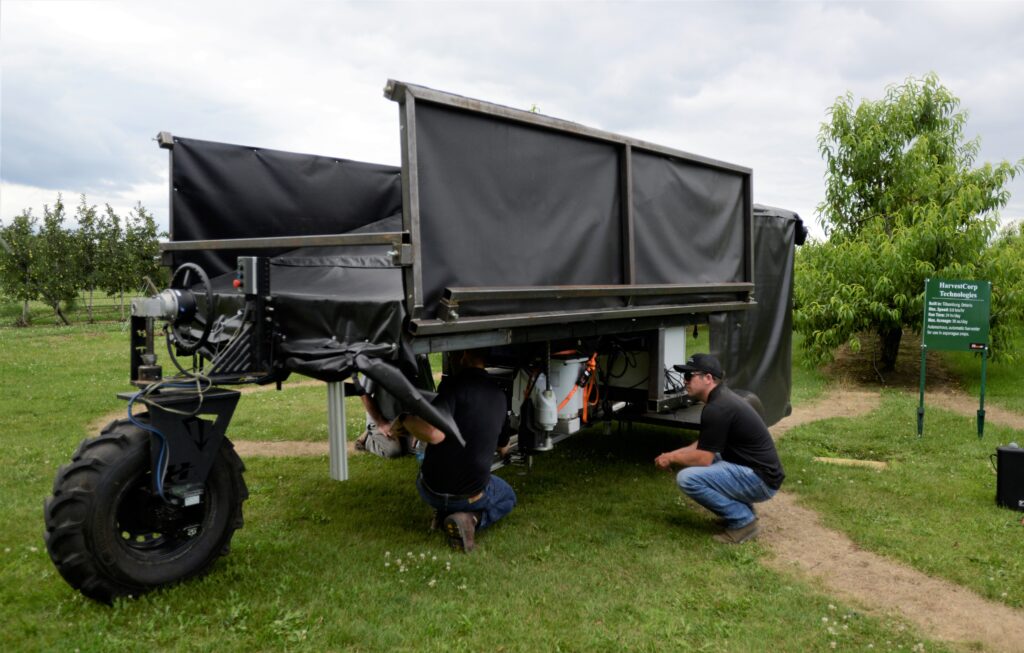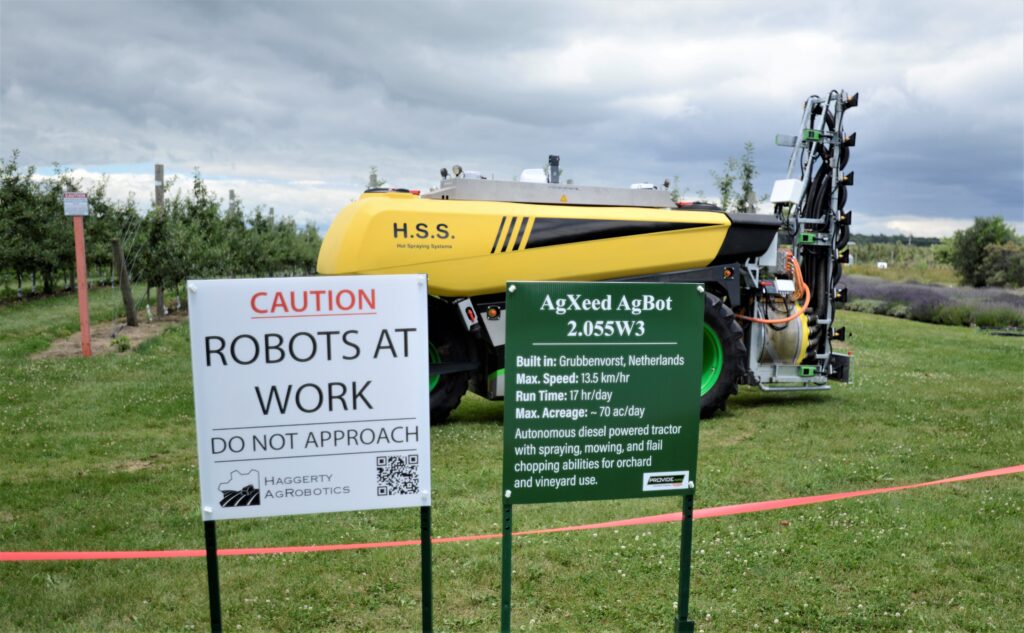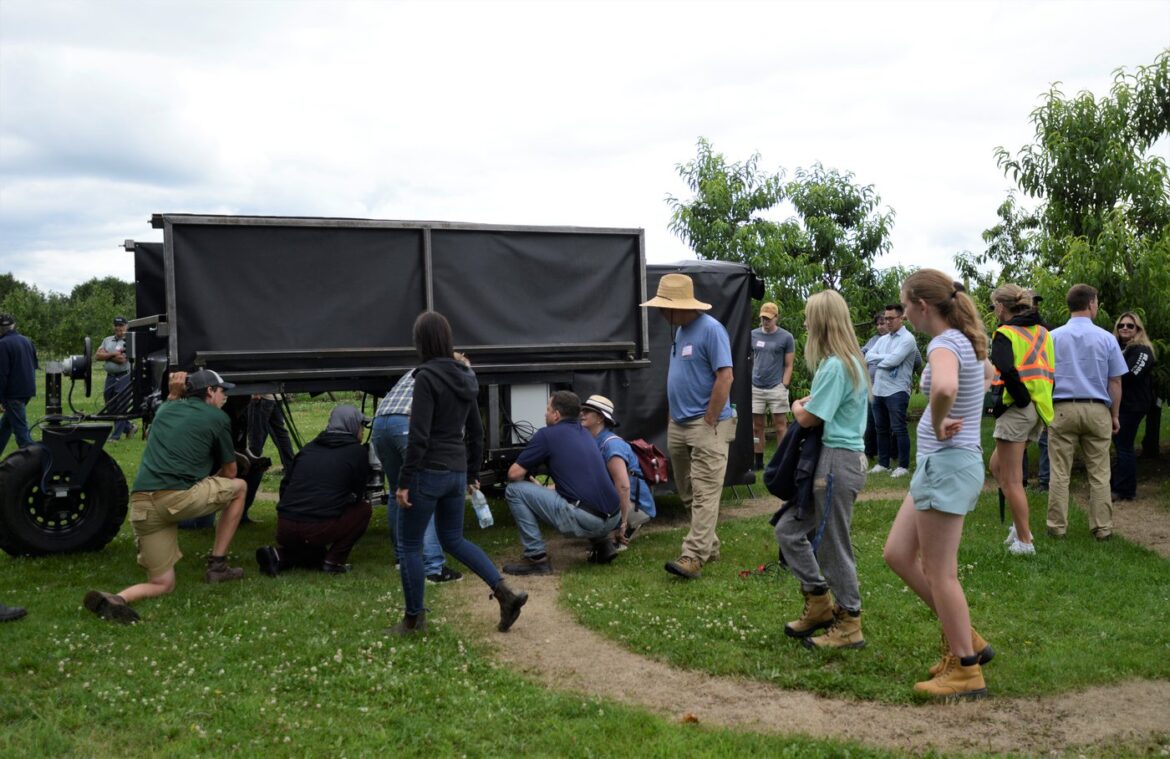Picking asparagus is back-breaking work.
Scurrying down the field, knife-wielding workers stoop down to cut the dark green spears shooting out of the ground and scoop them into large totes.
A robotics company in Tillsonburg has developed an automated asparagus harvester that reportedly collects up to 60 spears a minute and can clear four rows at once.

“This should take four people and convert them to one,” said Steve Spanjers of HarvestCorp Technologies.
The automated harvester only needs one operator to guide the machine, switch out the totes, and pick up any spears missed by a front-mounted camera that can identify asparagus to “95 per cent” accuracy, Spanjers said.
The robot can navigate fields with the aid of GPS and is programmable to only harvest spears of a certain height or girth, placing them on a conveyor belt under a protective tarp.
“The asparagus almost always comes in properly aligned and stacked in nicely,” Spanjers said. “There may be the odd one that’s backwards.”
Spanjers was speaking to a large crowd of growers, researchers and industry representatives at the third annual AgRobotics Demo Day, held at the provincial agricultural research station in Simcoe on July 11.

The event is a chance to showcase new technology designed with farming in mind, said Kristen Obeid, co-chair of the Ontario AgRobotics Working Group.
“The whole purpose of our group is to bring innovation and agriculture together early,” Obeid told The Spectator.
“We want the tech companies who have something cool to come and see agriculture and actually build something that’s solving a problem for the growers.”
The working group has more than 200 members across Canada and internationally who meet weekly on Zoom to share ideas and give feedback about how robots should be modified to succeed on Canadian farms.

Obeid, a weed specialist with the provincial agriculture ministry, said this year’s summit brought more than 170 people to Norfolk County to watch autonomous mowers, sprayers, weeders and tractors trundle through the test plots at the research station.
Most of the prototypes were from Europe, but the asparagus harvester is a made-in-Canada solution.
“Really, we have institutions here,” Obeid said. “We have the people. We have the brains. We can be building this here.”
Asparagus can regrow quickly, making for a fast and furious harvest that puts strain on workers, most of whom are migrant farm workers. The electric-powered harvester, which retails for $400,000, can ease that strain by clearing up to 30 acres per day.
“We can basically run 24-7 if that’s what you require,” Spanjers said.

HarvestCorp predicts a return on investment, in terms of savings on time and labour, within three or four years. In the future, Spanjers could see the robot learning to harvest other field crops and be used for weeding.
“I think it’s good for more people to know about what’s being developed right here in southern Ontario,” he said.
Haldimand-Norfolk MPP Bobbi Ann Brady was impressed.
“This is incredible,” she told The Spectator.
The next step, Brady said, is for upper levels of government to reduce regulatory barriers and “create an environment that’s positive” for local and international investment in Canadian manufacturing innovation.
“We’ve got to get that buy-in from government,” Brady said. “And if we don’t, we’re going to miss the boat.”
Proponents say robots increase efficiency, reduce labour costs, and free farmers to do other tasks. The operator of the asparagus harvester, for example, can make phone calls while the machine collects the crop.
“One farmer we talked to was excited about it because he wanted to still have his crews doing other fields and have this machine run through 30 acres, and he would just come back and check on it every so often,” Spanjers told The Spectator.
Brady said the scarcity of manual labour is a recurring problem she hears about from farmers, and technology could be one way to address it.
“We would still obviously need those workers. We still need the planting, we still need tending to crops,” she said.
“Harvesting is really the critical time. You have to get that crop off. You have done everything you can to produce a great crop, but if you can’t (harvest), it’s all a moot point.”
Labour advocate Chris Ramsaroop from Justicia for Migrant Workers is skeptical new technology can completely replace offshore workers.
“I think there’s always going to be a need,” Ramsaroop told The Spectator, noting workers can keep going when machines break down in the field.
“At this point in time, I’m not convinced that automation or robotics are going to be able to ever compare to the skills and expertise that all these people bring to their job,” he said.
To Obeid, robotics can help “bring young people into agriculture” and chart a viable future for the industry.
“Robotics is the next phase for horticulture, absolutely,” she said. “I think we’re right at the beginning.”
By J.P. Antonacci, Local Journalism Initiative Reporter





